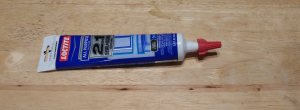My Recent Win with Ryobi
Background
I have two power hand tool sets – a Black and Decker 18V NMH (Nickel-Metal-Hydride) set, that I’ve had for 10+ years now, and a Ryobi 18V LiI (Lithium-Ion) set, that I’ve had for maybe 5.
I’m not a full time handyman – I’m a “weekend warrior”, that needs a reliable set of tools in order to perform simple home / vehicle repairs, and work on projects.
Although I originally bought my B&D set from Lowes (over a decade ago), they stopped carrying B&D all together, and neither did Home Depot carry B&D.
The B&D set fit my needs quite nicely, and I had a large selection of B&D accessories, batteries, and chargers. As with all NMH batteries, they slowly lose capacity every time you recharge them. It wasn’t uncommon to have to switch batteries, even for a small project.
As the batteries became harder to get, and in light of my coffee maker fiasco, I made the switch to LiI, and selected the Ryobi 18V tool set (bright green), which came with a drill / driver, reciprocating saw, a flashlight, and a circular saw. On top of that, I bought the string trimmer, paint sprayer, and a jigsaw, as well as a gang charger and a few more batteries. Unfortunately, Ryobi is only carried by Home Depot.
As stated, I use the Ryobi set all the time, and it’s probably right at 5 years old.
The Win
I had an “opportunity” to help someone out by repairing their aluminum storm door that had (believe it or not) rusted open, and was allowing water in to the door frame, damaging the door, frame, and floor.
In addition to the door closer being rusted open (how does that even happen?), the middle and bottom hinges were completely blown out.
Being a mobile home, the storm door used a piano type hinge, where a single vertical pin ran the height of the door, and connected three leaves on the door (each about 4 inches tall) to a rail in the door frame. In the middle and bottom locations, the rail was completely ripped away from the door frame, due to the closer being at the bottom of the door, and stresses due to wind, etc.
On top of the door hinges being stripped off the door frame, and the closer being rusted OPEN, the middle glass panel was not properly situated in its frame, and was hanging loose.
In this situation, we needed functional, NOT pretty.
So here is a list of my ad-hoc repairs:
- Used a flat “L” bracket to secure the loose panel. This involved drilling several holes through aluminum, gluing (with silicone adhesive) the bracket, and securing it with screws.
- Cut away the rusted door closer. This consisted of making three cuts through the steel mounting bracket with a jigsaw and metal-cutting blade.
- Detach the top hinge. Since the hinge consisted of one long pin, about 6.5 feet tall, and there was no room to get a jigsaw in there, this consisted of drilling out a perpendicular section of the steel pin using a titanium-carbide drill bit, then using wire cutters to separate the hinge in to sections.
- Install three conventional hinges. This involved drilling 6 pilot holes through aluminum, per hinge, then installing the hinges using silicon adhesive and 6 machine screws per hinge.
- Install a door sweep on the inner door. This consisted of using the jigsaw to cut the door sweep to its proper length – the door sweep is nylon and rubber. Once mounted in the correct position, several pilot holes needed to be drilled, and then mounting screws installed.
This sounds like no big deal… HOWEVER… Somehow, I left the house without a charger, and the only battery I had with me was the one on my drill – meaning, I had already used that battery to some extent after it was swapped out. Home was at minimum, a 2.5 hour round-trip drive, so I didn’t have a lot of options.
I was able to complete the entire project with one battery.
I shared one battery between the saw and the drill/driver, and completed the entire project with plenty of charge left over.
On one trip to the local hardware store, I had briefly considered “upgrading” to a 20V set, but decided that I’d save that for a last resort.
I was completely surprised that I was able to repeatedly use both tools, and complete the entire project on less than one battery.
I think I’ll stick with my Ryobi set!
NOW, THAT is a GOOD design!





